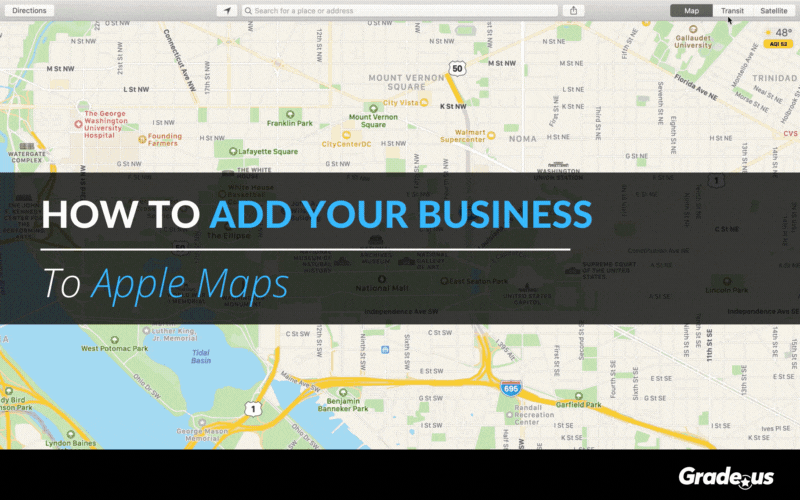Apple Maps is a local search contender.
According to Statista, Apple Maps is the third most popular maps service on the market today. Their service has 23.3 million monthly unique visitors. Google leads the pack with 154.4 million monthly unique visitors.
Is Apple Maps worth the time for a local business?
As you’ll soon see, it’s a worthwhile investment and a key part of your local search and review management strategy.
Let’s dive in.
Table of Contents
Get the Reputation You Deserve with Grade.us
What is Apple Maps?
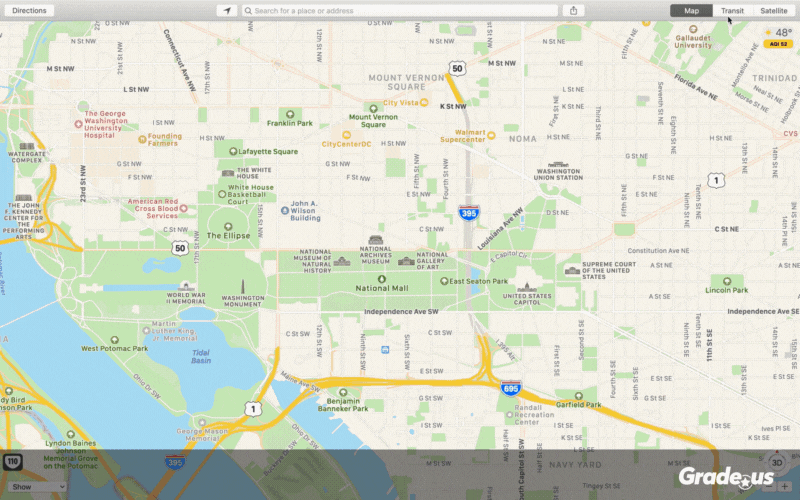
Apple Maps is a web mapping service exclusive to iOS, iPadOS, WatchOs, and macOS. As the name suggests, it’s built by Apple Inc. Prior to launch in 2012, Apple announced that their app would include turn-by-turn navigation, 3D maps, Flyovers, and Siri, their virtual assistant.
Apple Maps previously relied on TomTom for map data and agreements with other third-party providers in other countries.
This created problems.
Within one month, users complained as Apple struggled with technical issues, wrong directions (yikes), no support for public transportation, and a plethora of bugs.
Apple made a change.
In January 2020, Apple made the transition from third-party providers, opting to gather fresh location data themselves.
Apple Maps offers a variety of features:
- Turn-by-turn navigation with spoken instructions for vehicles, pedestrians, and public transportation.
- Apple customers can use the app while driving via CarPlay, and via Siri, Apple's voice assistant app.
- Navigation is available in 56 countries worldwide.
- It can also be used to see real-time traffic information. Siri, Apple's virtual assistant, is integrated into navigation.
- Maps display points of interest provided by approximately twenty companies, including Booking.com, Foursquare, TripAdvisor, and Yelp.
- Users can drop pins on the map to save places for later retrieval.
- The satellite view features Flyovers, three-dimensional satellite views in designated locations.
- The Nearby feature displays points of interest for each category. Points are shown with their names, distances, and reviews on Yelp.
Their feature set is comparable to Google Maps, but the significant benefit to Apple Maps is the fact that so many third-party providers (e.g., Yelp or Booking) are integrated into their service.
Apple Maps vs. Google Maps
While Apple is exclusive to Apple devices, Google Maps is a cross-platform application on Android and iOS. The services are comparable, but there are some important differences. Here are a few:
- Apple shares data contextually taking a subtle approach. Google gives the user everything.
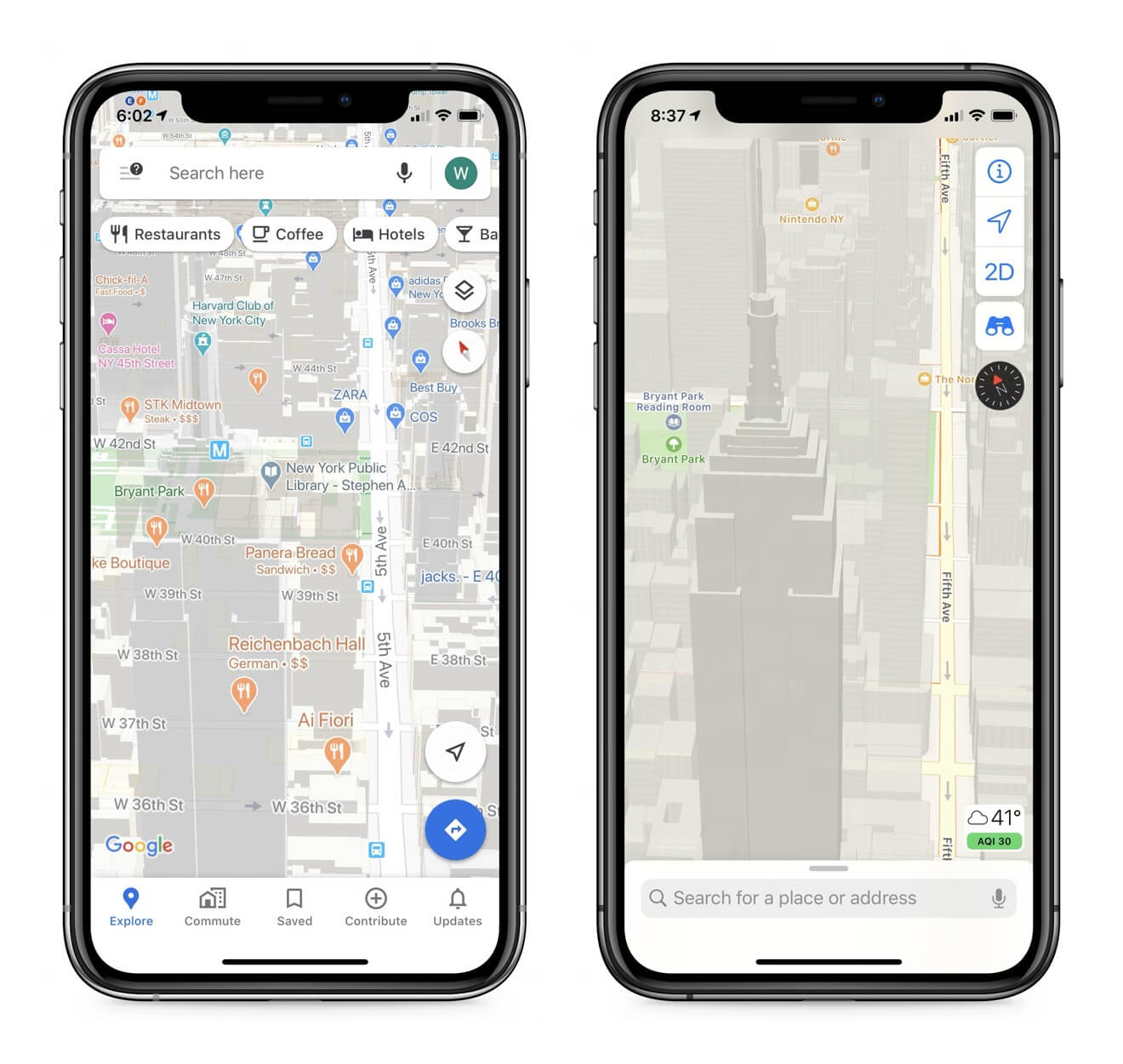
Source: Apple Insider
- Apple’s search bar is at the bottom of the screen, while Google’s search bar is at the top with the explore, commute, saved, contribute, and updates button.
- Apple has flyover mode, a 3D landscape of buildings and structures. Google has Street View.
- Apple integrates Siri tightly with Apple Maps, and other apps in your phone (e.g., location data for your photos) tell Siri where you’d like to go, and navigation is seamless.
- Google Voice Assistant works in a similar fashion but isn’t as tightly integrated with the rest of the software and hardware in your device.
- Both Apple and Google integrate Maps with mobile devices, vehicles, watches, and smart speakers.
- Apple Maps doesn’t hold onto your data, going out of their way to protect your privacy. According to Apple, “When you use Apple Maps, your route from A to B is scrambled into sections on Apple servers because nobody else should know your entire route.“
There’s a significant degree of overlap here, however, there are some crucial differences.
Want a navigation experience that’s seamless, one that’s fully and natively integrated across your Apple software and devices? Then Apple Maps is probably the best fit.
If you’re looking for a rock-solid mapping tool that provides you with a comprehensive amount of data and access, Google Maps is what you need.
The best option?
Add your business to both Google and Apple Maps.
Siri with Apple Maps
Using Siri, Apple’s voice assistant, you can perform several types of searches beginning with the activation keyword “Hey Siri.”
- Hey Siri, take me home.
- Hey Siri, what's the traffic like in Chicago?
- Hey Siri, show me how to walk to work.
- Hey Siri, where is the nearest Japanese restaurant?
- Hey Siri, show the Langley Mall in Apple Maps.
Siri is remarkably intuitive, handling searches with several variables.
Apple Maps and CarPlay
With CarPlay, iPhone users can unlock and start their car with their iPhone. You can make calls, send and receive messages, choose your favorite music, and get directions for your route.
It’s all hands-free of course.
CarPlay with Siri voice control gives you the hands-free experience you need to manage Apple Maps. As a fallback, you can work with your car’s controls as well. You can even use Apple Maps and Siri to report problems on the road.
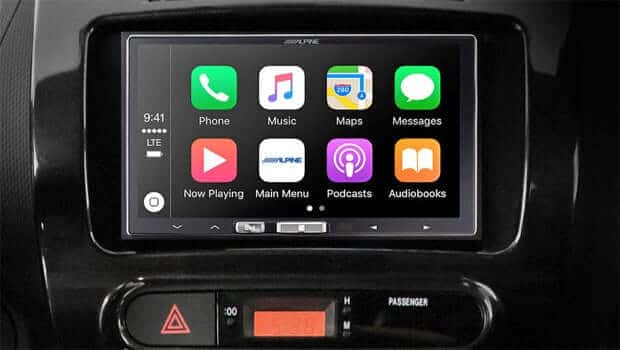
Who uses Apple Maps?
Apple users are the primary users of apple maps. It is the default mapping service on all Apple devices, replacing Google Maps in 2012.
Here’s why Apple Maps is important.
Apple says there are now 1.65 billion Apple devices in active use overall and 900 million to 1 billion+ users in 2019. To put things in perspective, there are 4.66 billion internet users worldwide as of 2021.
Here’s why this matters.
Apple Maps is used 3x more than Google Maps on iPhones and Apple devices.
There’s more.
DuckDuckGo uses Apple Maps to display maps and navigation data in their search results. According to DuckDuckGo:
“You can click on a map result to open an interactive map where you can pan, zoom, search, and look up directions. DuckDuckGo map searches and route planning are powered by Apple’s MapKit JS framework.”
DuckDuckGo doesn’t collect user information so it’s difficult to pinpoint an exact number. However, earlier this year they hit an important milestone.
100 million searches per day.
This may not seem like much but it’s significant because Duck Duck Go’s new users come from Google and Bing.
It’s indirect competition.
But it’s also an important indicator as it shows there’s room for tremendous growth. Apple maps usage grows in lockstep with DuckDuckGo.
How does Apple Maps handle ratings and reviews?
Initially, Apple Maps relied on third-party providers like TripAdvisor and Yelp.
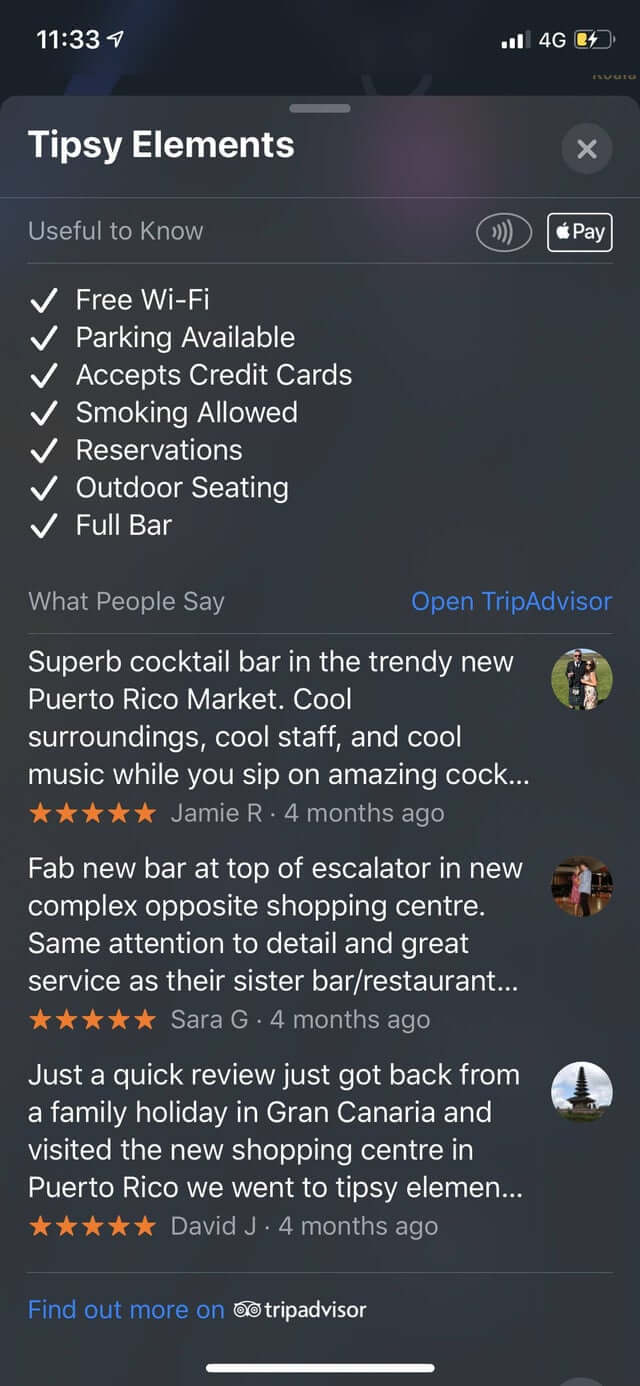
Source: Reddit
Earlier in 2021, Apple decided it was time for a change. While reviews are offered via third-parties for now, Apple decided to offer ratings for businesses listed in Apple Maps.
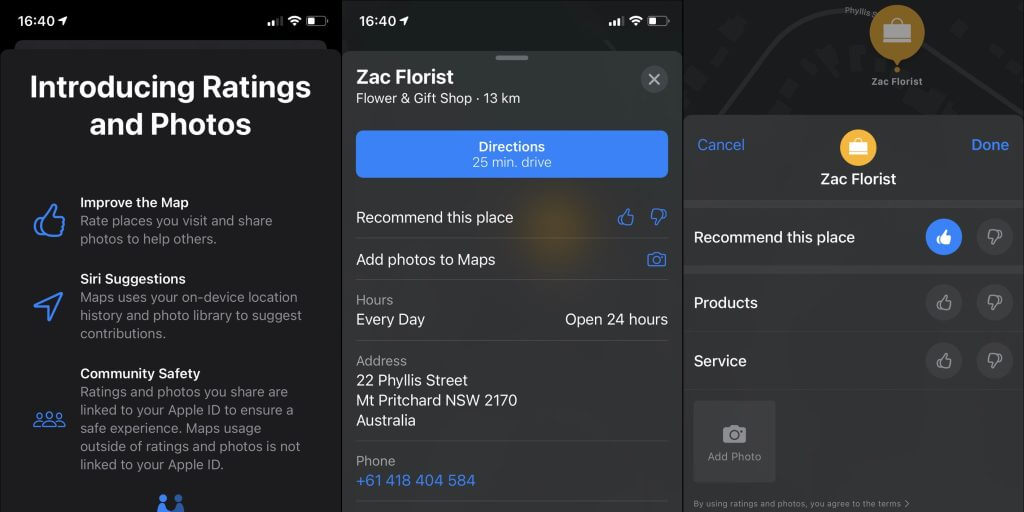
Source: 9to5mac
Apple’s rating system went live in 2019 with the MacOS 14 beta 6 update, with plans for expansion through 2021. As you can see, this thumbs up/down rating system allows users to rate products, services, and businesses.
It’s a work in progress.
It’s expected that Apple will expand its rating system to include reviews of local, regional, and national businesses.
Apple prefers to avoid dependence on third-parties.
What’s unclear is their timeframe and the number of services they plan to add to their ratings and review system.
How to get your business listed in Apple Maps
- Head over to mapsconnect.apple.com
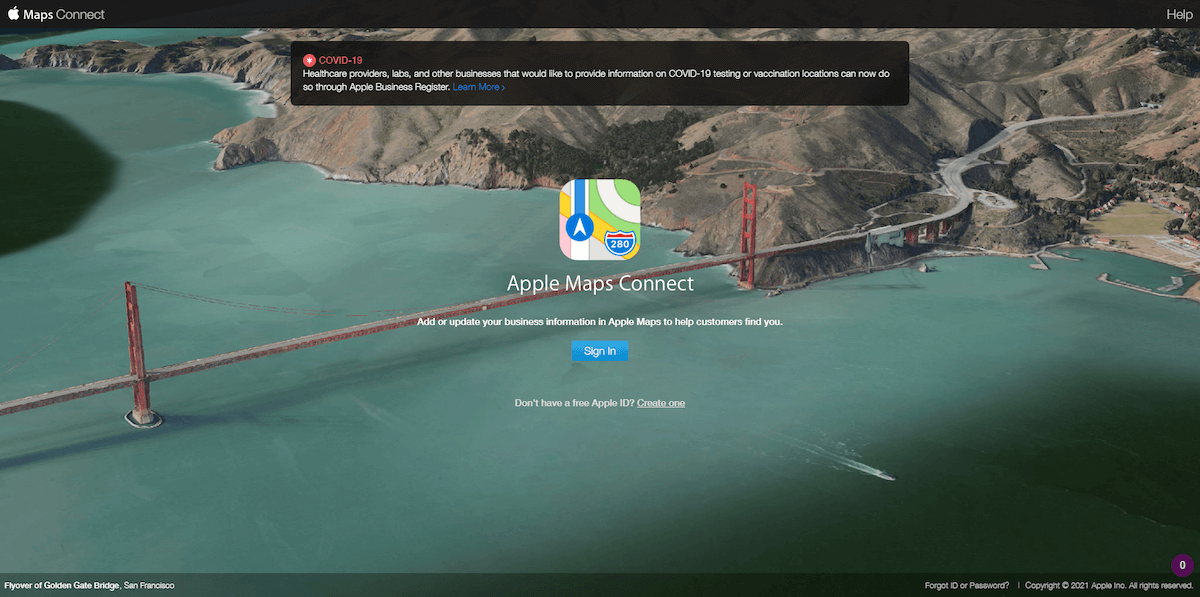
- Sign in with your Apple ID (you’ll need to create an account if you don’t have one)
- Search for your business using the search fields above. If you don’t see your business, you can also add it
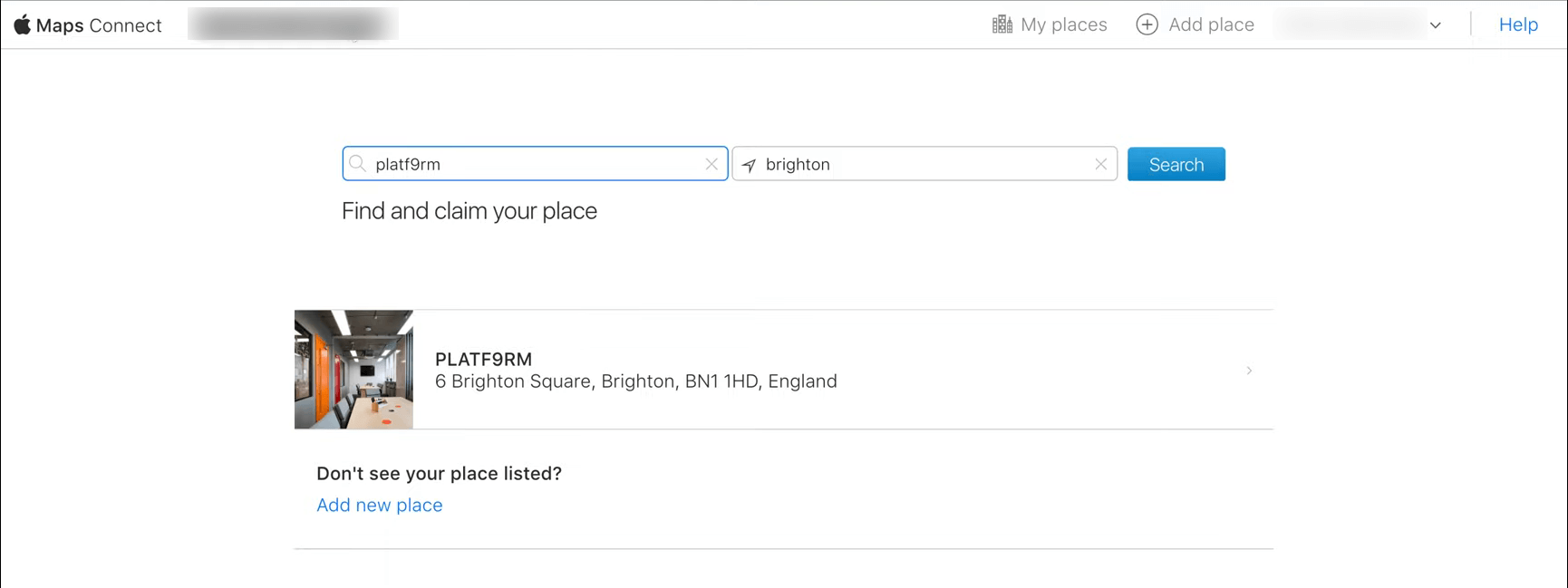
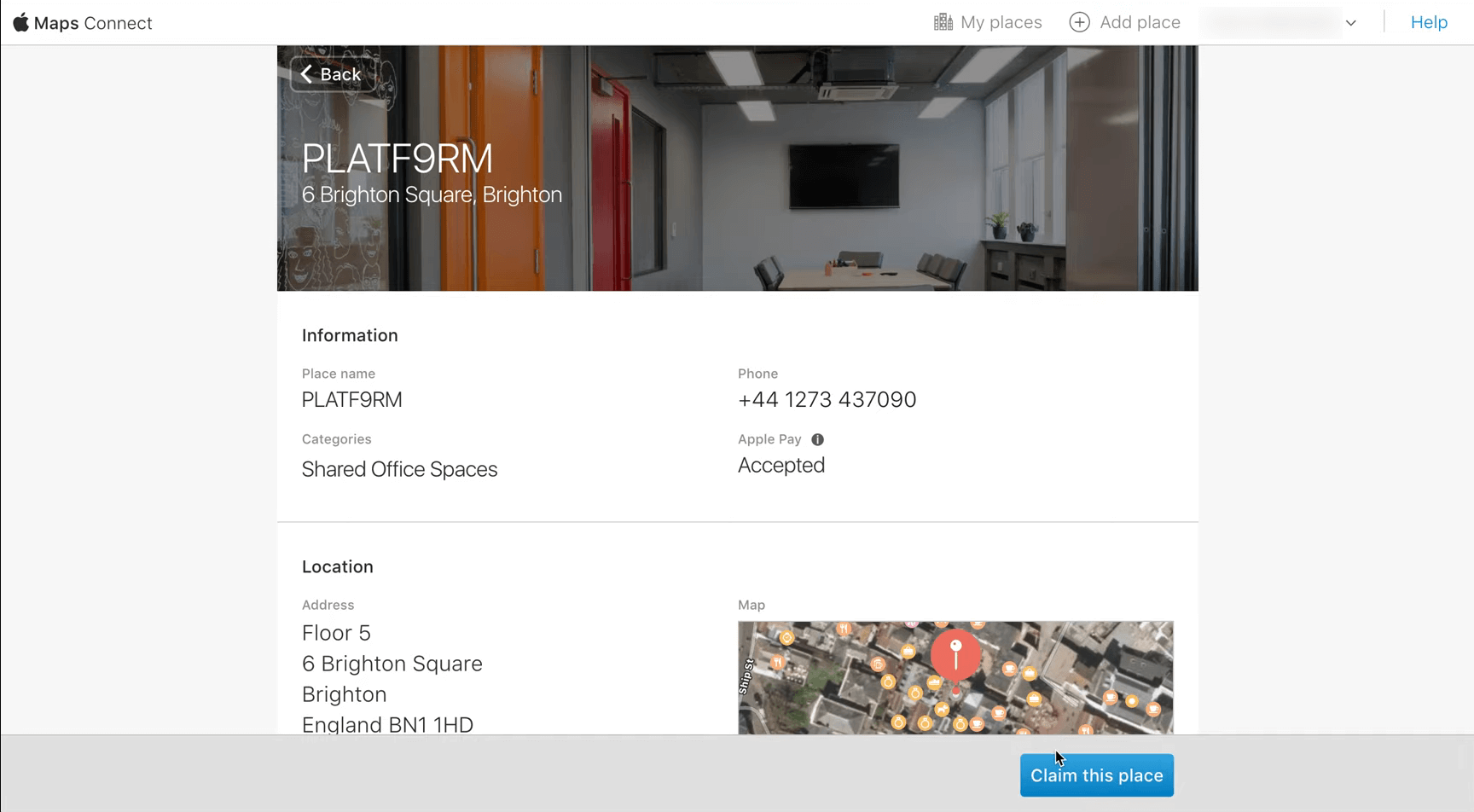
- Once you’ve found your business, you’ll be prompted to verify your account
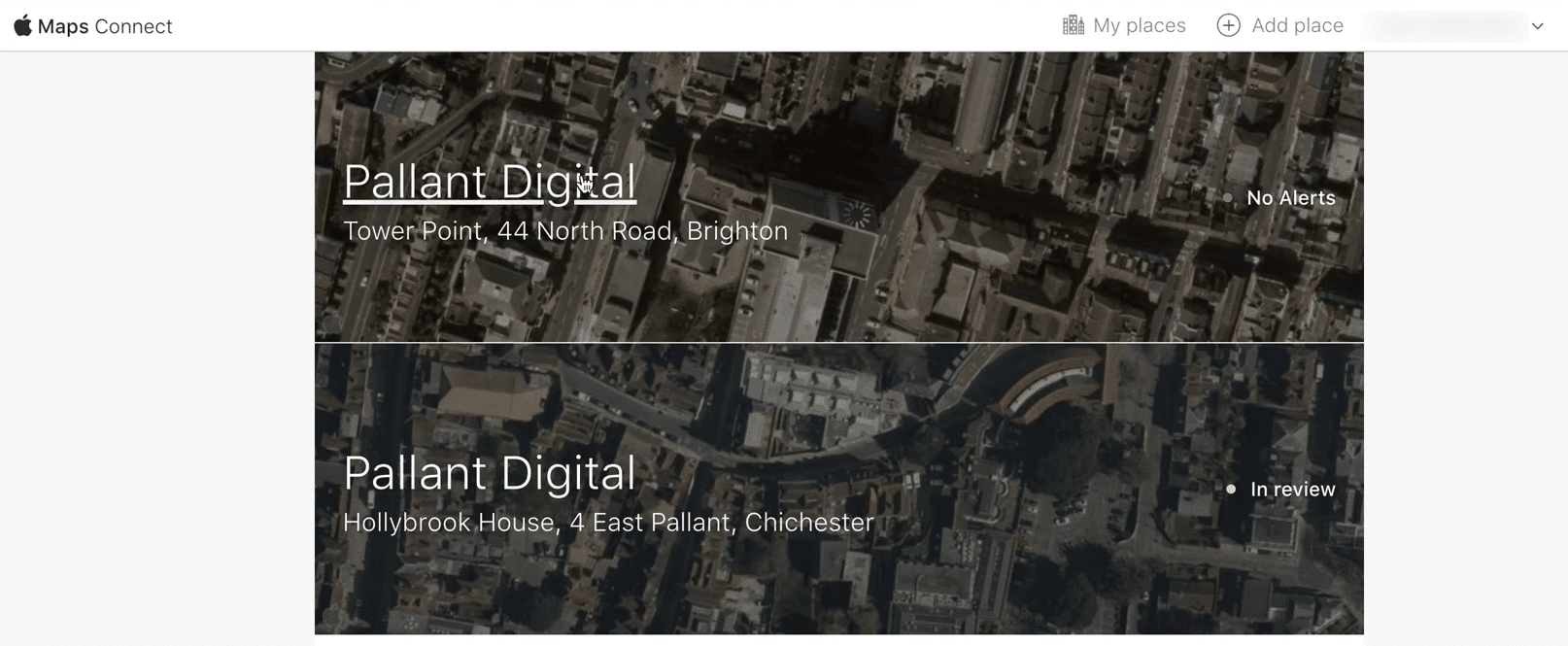
- Once verified, you’ll be able to edit the content on your page
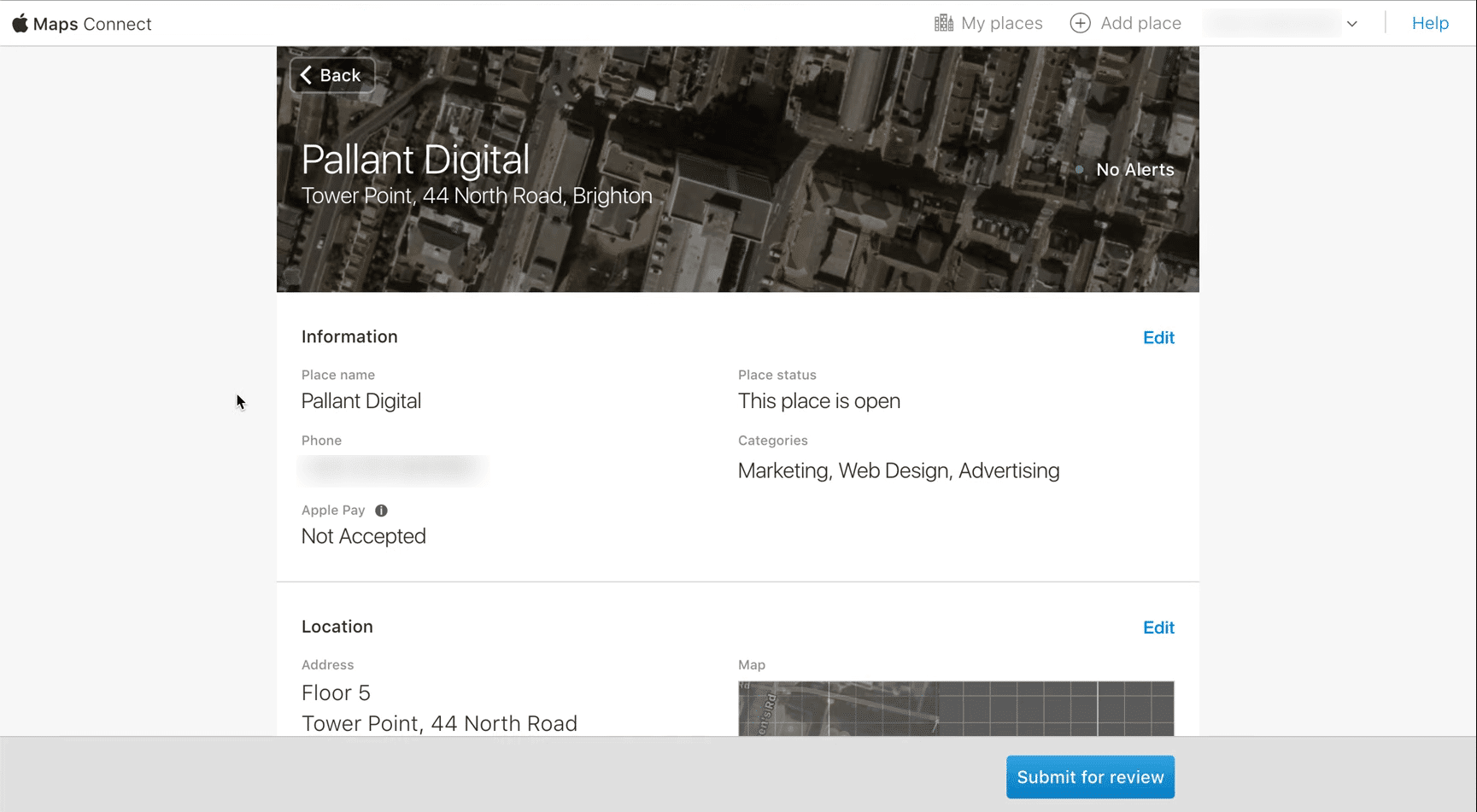
You can add the following information to your Apple Maps listing:
- Business name
- Phone number
- Apple Pay Accepted (or not)
- Categories
- Place status (open/closed)
- Address
- Hours of operation
- Links to your apps, website, Yelp, Facebook, and Twitter accounts
Apple makes this a simple and straightforward process. Just follow the prompts, provide the necessary info, and your business should be ready to go!
The future for Apple Maps
Apple Maps is intertwined with the Apple product ecosystem. Unlike other platforms that seek to attract marketers to their service (Google), Apple prefers to focus its attention on creating groundbreaking products. As their product lines mature, Apple has moved increasingly into subscription services.
We’ll have to wait and see if third-party services like Grade.us or GatherUp are given access to Apple’s platform, or if they’ll decide to keep things more private and focused on the user.
Only time will tell.
What is clear is this: Apple is actively developing its own ratings and reviews service. Though third-party support via tools like Yelp and TripAdvisor won’t disappear overnight, it’s inevitable that they’ll be phased out. This means the time to prepare is now.
Apple Maps is a priority for your business
A common mistake businesses make is putting all of their eggs in one basket. While Google receives the lion’s share of the reviews, it’s not enough to build a balanced review portfolio. This is where your web analytics can play a crucial role in your business.
Look at the operating systems listed in your analytics. Take the time to survey and follow up with customers. If they’re using iOS devices, Apple Maps should be part of your review management strategy.
Apple makes it easy.
With a little time and effort, and a strong review portfolio, you’ll find the rewards you receive compound over time.

